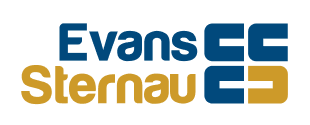How to Reduce Self Employment Tax: 5 Smart Ways
Self-employed? Cut self-employment tax legally. Keep more profit with smart entity choices, deductions, and planning—no surprises at filing this year
Table of Contents
The U.S. Bureau of Labor Statistics counted over 16.3 million self-employed Americans as of 2025 (BLS Table A-9).That’s a lot of freelancers, consultants, and independent contractors enjoying the freedom of being their own boss. But that freedom has a price tag, and for many, it shows up as an unpleasant surprise during tax season in the form of the self-employment tax (how your SMB is taxed).
Fortunately, you’re not powerless. The law offers several strategies to help freelancers, consultants, and independent contractors reduce self employment tax and increase their savings. Here’s everything you need to know about it.
Key Takeaways
• Self-employment tax is 15.3% (12.4% Social Security + 2.9% Medicare) on net profit, and it kicks in once you have $400+ in annual net earnings.
• You pay both halves of payroll taxes as your own “employer,” which is why the rate is higher than the 7.65% you see as a W-2 employee.
• The rate is fixed, but your tax base isn’t—the goal is to lower net income subject to the SE tax.
• S-Corp election can cut SE tax: pay yourself a reasonable salary (payroll taxed) and take remaining profits as distributions (not subject to SE tax), with added compliance/formality.
• Deduct every legitimate business expense—including home office, business share of phone/internet, vehicle costs—supported by meticulous records.
• Max out retirement contributions (SEP-IRA, Solo 401(k)); contributions reduce taxable net income and therefore reduce SE tax while growing savings.
• QBI deduction (up to 20%) lowers income tax, not SE tax, but it still meaningfully boosts overall tax savings when combined with other strategies.
• Operate proactively: make quarterly estimated payments (Form 1040-ES), separate business/personal finances, and use accounting software or a tax pro to avoid common mistakes like missed deductions and poor cash planning.
Understanding Self-Employment Tax
Before delving deeper into specific ways of reducing self employment tax, let’s explore the ins and outs of what you’re dealing with first and why it often feels like a burden to people who are caught off guard.
What Is Self-Employment Tax?
Think of it as your contribution to Social Security and Medicare. When you work for yourself, you’re responsible for paying this yourself, whereas a traditional employer would handle it for you. Our Tax Advisory & Preparation for Individuals page explains how we handle self-employed returns and quarterly estimates.
The total rate sits at 15.3%, which covers both Social Security (12.4%) and Medicare (2.9%). This is on top of your regular income tax, and it applies to your net business profit; that’s your income after subtracting your business expenses. If you net $400 or more in a year, you’re on the hook for it. IRS FAQ (Schedule C & Schedule SE).
Who Pays It and Why It’s Higher
When you’re on a company payroll, you only see 7.65% taken out of your check for taxes. What you don’t see is that your employer is matching that amount behind the scenes. When you’re self-employed, you are the employer. So, you get to pay both halves, adding up to that full 15.3%. You’re essentially covering the share that a company would normally pay, which is why it takes a bigger bite out of your bottom line. Learn how to determine whether a person providing a service to you is an employee or an independent contractor here.
Considering an S-Corp? You’ll need clean payroll—our payroll services handle compliant wages, withholdings, and filings so you don’t trip IRS rules.
5 Ways to Reduce Self-Employment Tax
Now that you understand the textbook definition, what reduces self employment tax? The 15.3% rate itself is fixed, but your taxable income isn’t. A proactive approach to structuring your business and finances can make a substantial difference. Here are five legitimate methods to consider.
1: Select S Corporation Status
For established businesses with solid profits, electing S-Corporation status can be highly beneficial. The strategy is straightforward: you pay yourself a “reasonable salary” from the business earnings, which is subject to payroll taxes. The remaining profits, however, can be distributed as shareholder dividends, which are not subject to self-employment tax. This can lead to meaningful savings, though it does require formal payroll setup and adherence to corporate formalities. Compare structures in our guide on tax differences between C corporations and S corporations.
2: Deduct All Qualified Business Expenses
Another way of “how to reduce self-employment tax” is by claiming every legitimate business expense. Beyond the obvious costs for software and equipment, be sure to claim the home office deduction, the business-use percentage of your phone and internet bills, and vehicle expenses. Meticulous record-keeping is essential for maximizing deductions. Use this business tax deduction cheat sheet to spot write-offs owners often miss (home office, phone, internet, travel, and more).
3: Maximize Retirement Contributions
Contributions to tax-advantaged plans like a SEP-IRA or a Solo 401(k) are deducted from your taxable income. For instance, with a SEP-IRA, you can contribute up to 25% of your net earnings. This directly lowers the net income subject to self-employment tax, all while building your nest egg for the future.
4: Leverage the Qualified Business Income Deduction (QBI)
While this deduction does not reduce your self-employment tax directly, it significantly lowers your overall income tax burden (IRS News — Qualified Business Income (Section 199A)). The rules are complex, with income thresholds and specific qualifications, but for eligible businesses, it represents an opportunity to retain up to 20% of qualified business income. It is a powerful tool that works in concert with other tax-saving strategies.
5: Hire Family Members
You’ve probably asked yourself, “How can I reduce my self employment tax by employing family members?” If your spouse helps with administrative tasks or your teen manages your social media, putting them on the payroll can be a smart move. Paying them a reasonable wage for real work turns their salary into a legitimate business expense. That directly reduces your net business income, which is the number on which your self-employment tax is calculated.
Start Reducing Your Tax Bill Now
Additional Strategies to Lower Your Tax Burden
Smart individuals seeking efficient ways to reduce self employment tax often go beyond entity selection, deductions, and retirement contributions. Getting the fundamentals right does more than just keep you compliant; it sets you up to effortlessly leverage every tax advantage available.
File Quarterly Estimated Payments
The IRS operates on a “pay-as-you-go” system. That means waiting until tax day to settle your bill can trigger underpayment penalties. The workaround is simple: quarterly estimated payments. By using Form 1040-ES to send in payments four times a year, you smooth out your cash flow and avoid that springtime shock. It forces you to regularly check your financial pulse, which is never a bad thing.
Keep Personal and Business Finances Separate
Mixing personal and business spending in one account can create a headache come tax season. More importantly, it blurs the lines for the IRS. A dedicated business checking account and credit card create a clean, defensible paper trail. It’s the simplest way to show the tax authorities that you’re running a legitimate operation, not just a hobby.
Use Accounting Software or Hire a Pro
Software like QuickBooks is fantastic for tracking transactions. But it can’t replace professional judgment. As your business grows or you consider moves like becoming an S-Corp, a good tax pro becomes your strategic partner. They spot deductions you might miss, help you plan for next year, and provide peace of mind if you’re ever questioned. Think of it as an investment that typically pays for itself.
Common Mistakes to Avoid
Sometimes, the best way to reduce self employment tax is to simply stop tripping over the same obstacles, such as:
Ignoring Deductions You Qualify For
Many new freelancers, accustomed to the W-2 world, are too conservative with deductions. They overlook things like the home office deduction or a portion of their cell phone bill. But remember, every legitimate business expense you deduct is a dollar less subject to the 15.3% self-employment tax. Don’t be shy about claiming what the tax code allows.
Not Planning for SE Tax in Advance
There’s nothing worse than a profitable year followed by a tax bill you can’t pay. Unlike employees, no one is withholding taxes from your paychecks. The responsibility is on you to set aside a portion of each payment, often 25-30%, for taxes. Proactive planning is the only way to prevent a cash flow crisis and potential penalties.
Conclusion
Real savings in self-employment taxes come from combining a smart choice of business entity, diligent tracking of your expenses, and proactive financial habits. Ultimately, getting professional guidance is prudent if you’re going to get it right from the start.
If you’re weighing sole prop vs. S-Corp (or timing a switch), speak with a CPA about entity selection and payroll setup before you file.
FAQ
- Q1: What’s a “reasonable salary” for S-Corp owners?
A: A pay level similar to what you’d give an employee doing your role — based on duties, hours, skills, location, and profits. The IRS can challenge unreasonably low salaries.
- Q2: Do I get to deduct part of my SE tax?
A: Yes. You can deduct the “employer” half of your SE tax on your Form 1040. It reduces your income tax, but it does not lower the SE tax itself.
- Q3: What qualifies for the home office deduction?
A: A space used regularly and exclusively for business. Use the simplified method ($5 per sq. ft., up to 300 sq. ft.) or actual expenses with good records.
- Q4: SEP-IRA or Solo 401(k)—which cuts tax more?
A: Both reduce taxable earnings. Solo 401(k) allows employee deferrals (and catch-ups), often enabling bigger contributions at lower profits; SEP is simpler to run.
- Q5: Can hiring family reduce SE tax?
A: Yes — if they do real work for a reasonable wage and you keep timesheets. Their pay is a deductible expense, lowering your net profit (and SE tax). Rules differ by entity.
- Q6: How do I avoid underpayment penalties?
A: Make quarterly estimates using safe harbors: typically pay 90% of current-year tax or 100% of last year’s (110% for higher incomes), split over four payments.
- Q7: Does the QBI deduction cut SE tax?
A: No. QBI can reduce income tax by up to 20% of qualified business income, but it doesn’t reduce SE tax. Eligibility and limits depend on income, wages, and business type.

